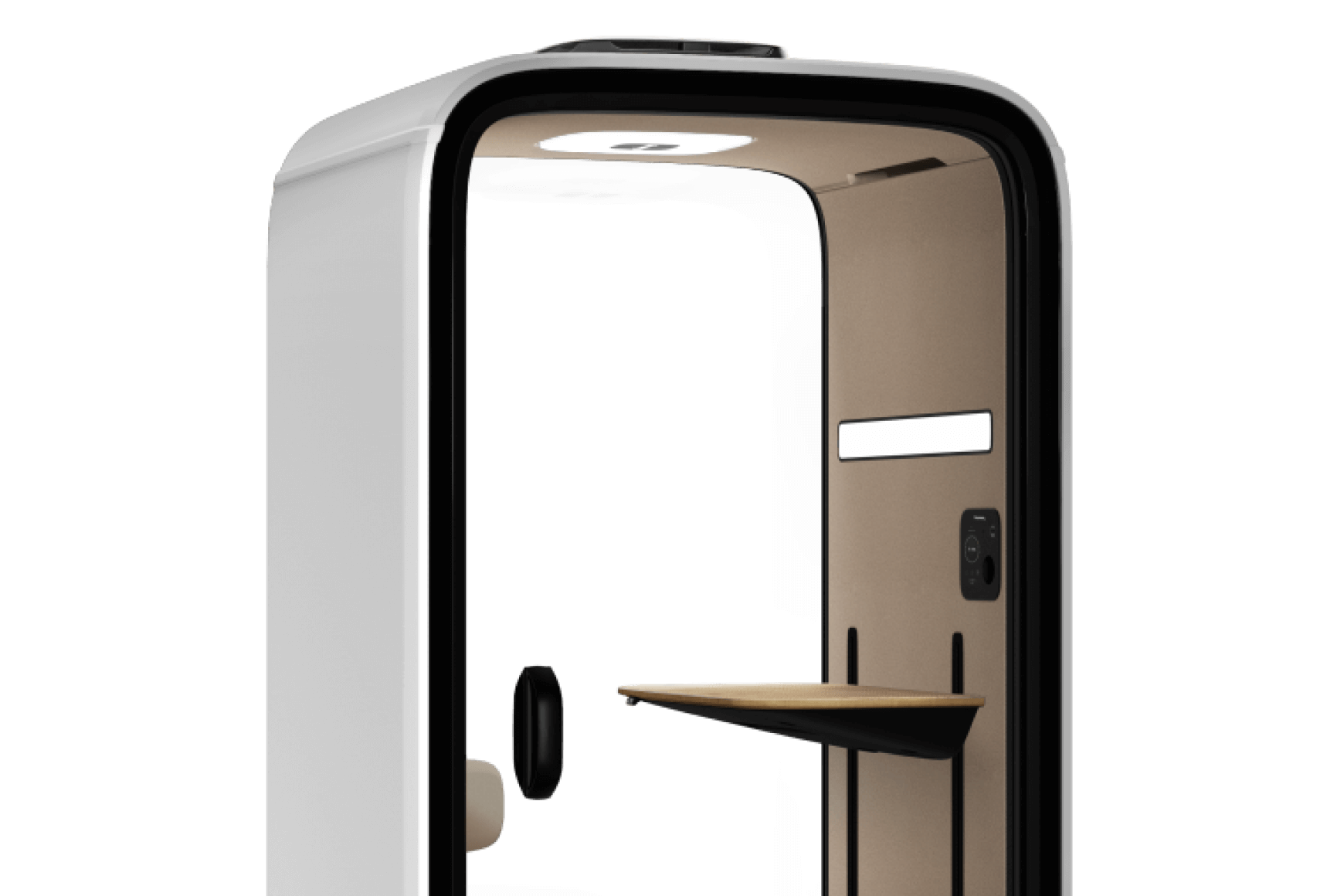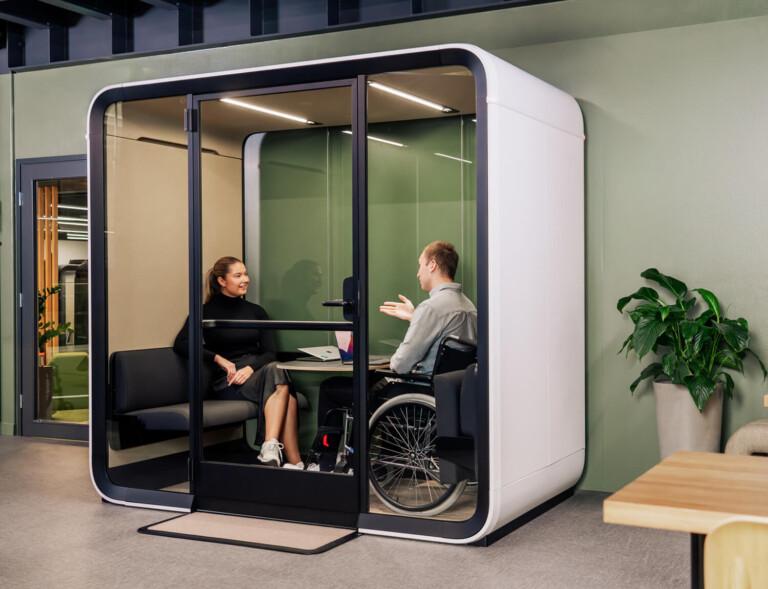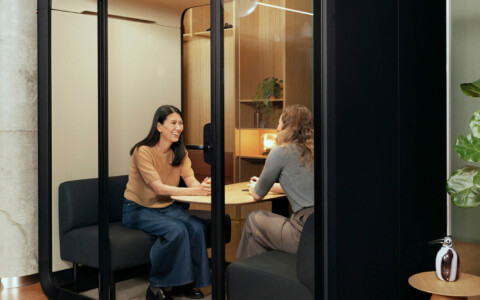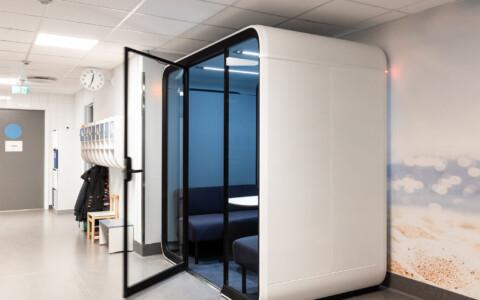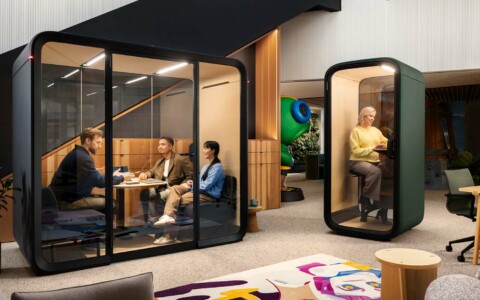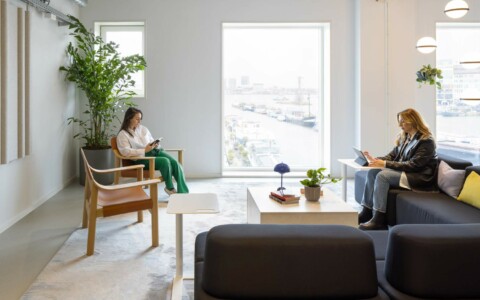Creating a truly inclusive workplace starts with workplace accessibility. This means designing and arranging the work environments so that everyone can participate fully and independently.
Designing an accessible workplace promotes equitable ability to carry out one’s work and fosters a culture of inclusion, innovation, and employee well-being. Furthermore, investing in workplace accessibility ensures compliance with laws and regulations for accommodating employees with disabilities, such as the Americans with Disabilities Act (ADA) in the United States.
Read on to learn what workplace accessibility means, why it matters, and how flexible office design can help create an accessible environment that works for everyone.
Key highlights:
- Workplace accessibility ensures all employees can participate fully—physically, socially, and digitally—regardless of ability.
- Office design can enhance accessibility by offering inclusive, adjustable, and sensory-friendly spaces for individuals and teams.
- Physical accessibility, disability awareness, and an inclusive environment enhance employee well-being, widen the talent pool, and demonstrate a genuine commitment to inclusion and equity.
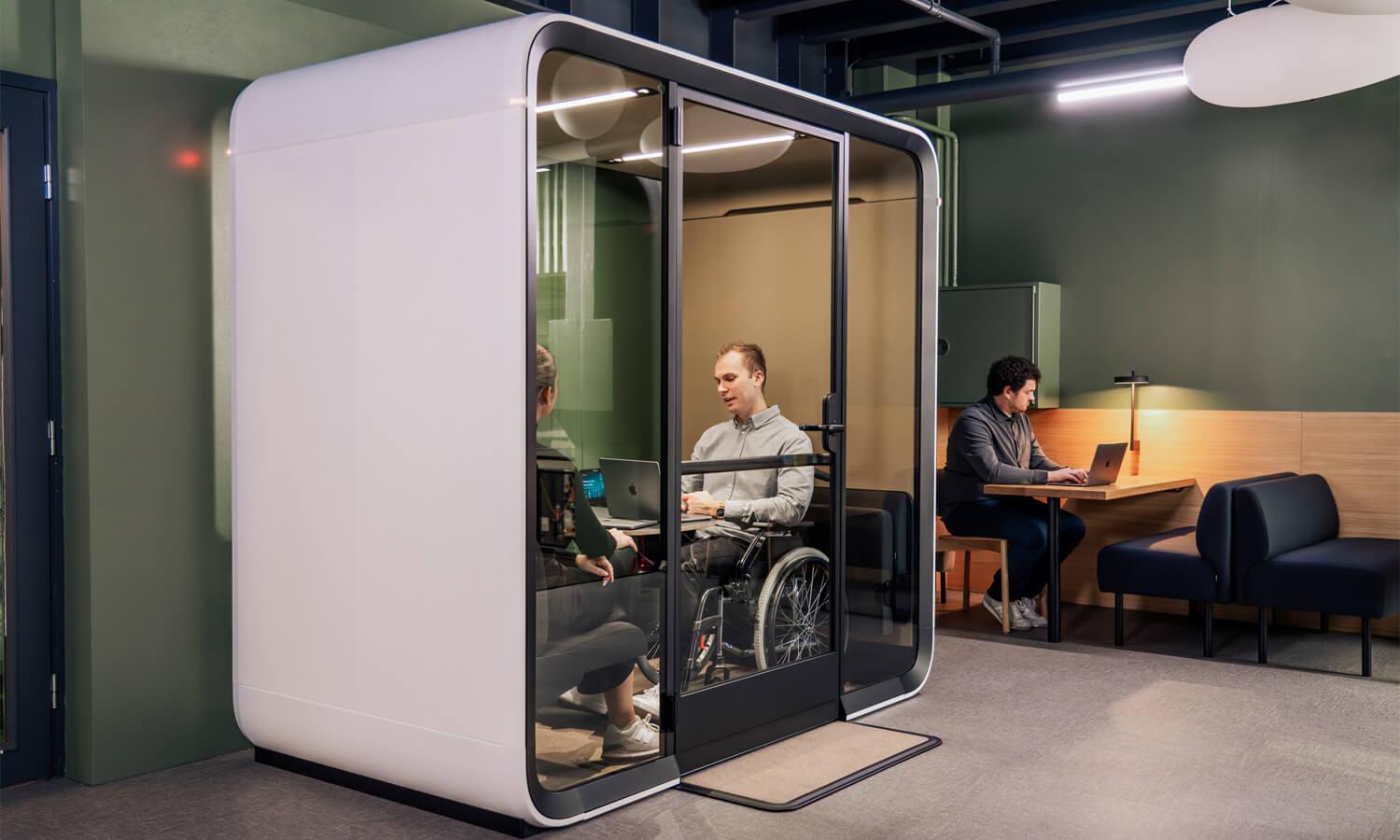
What is workplace accessibility?
A company’s workforce encompasses a diverse set of skills, personalities, and strengths, which is why investing in accessibility in the workplace can help them thrive and perform their work effectively.
Workplace accessibility refers to accommodating employees with varying physical, sensory, or cognitive abilities at work. Accessibility in the workplace impacts the organization on multiple levels, including inclusive hiring practices, office design, furniture selection, technology, policies, and workplace culture.
All employees are individuals with their unique strengths and needs. Therefore, the needs and types of accommodation vary, whether it is physical disability or different forms of neurodivergence. A truly accessible workplace addresses a wide range of needs, such as:
- Wheelchair-accessible pathways and entrances
- Adjustable desks and ergonomic furniture
- Accessible meeting spaces and collaboration zones
- Inclusive signage and communication tools
- Acoustic privacy for those with sensory processing challenges
- Assistive technology to adapt tools and software
- An inclusive workplace culture and flexible ways of working
- The opportunity to request and receive reasonable accommodations
Building an accessible workplace is an ongoing process, not a one-time fix. By prioritizing inclusive design and open dialogue with employees, organizations can create environments where everyone has an equal opportunity to thrive.
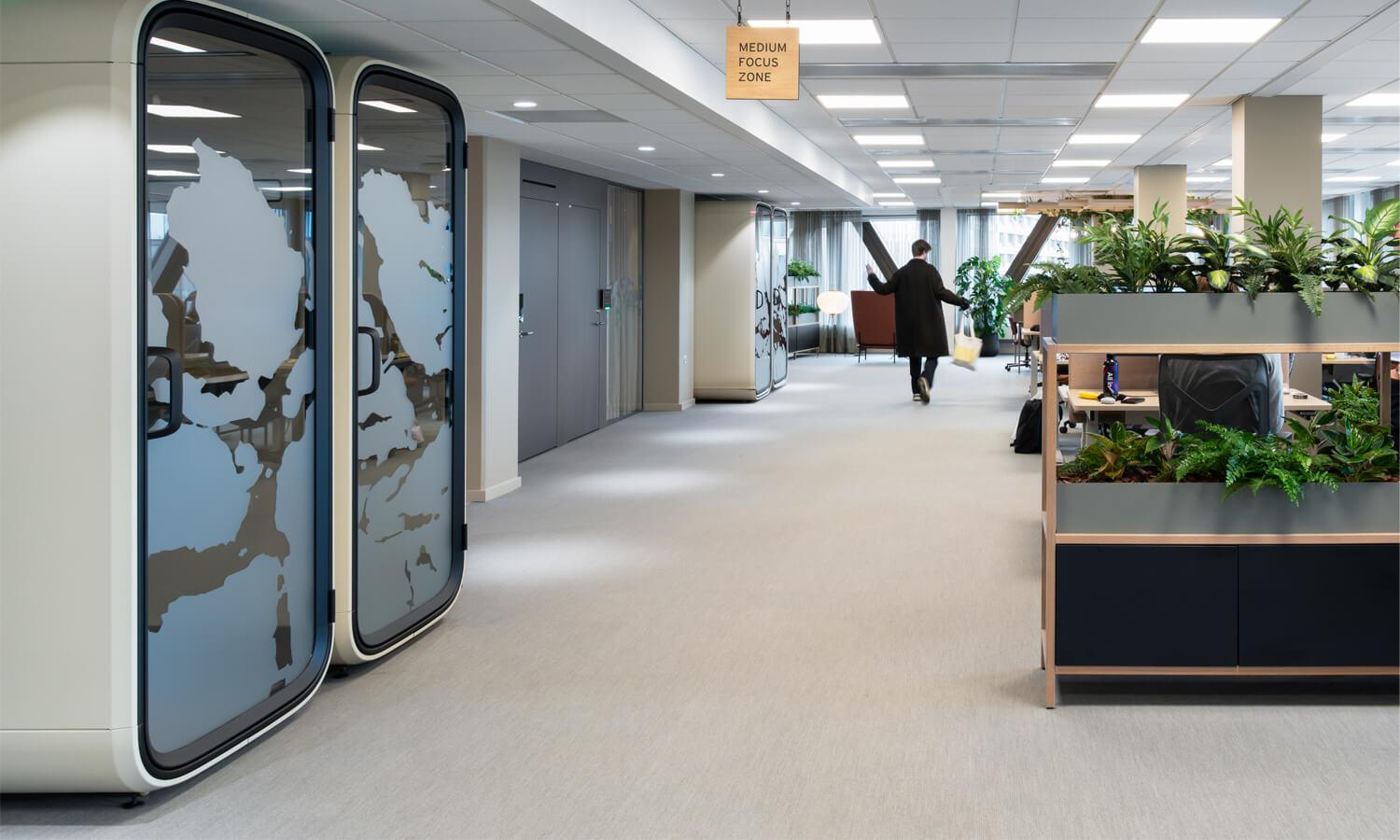
Physical accessibility: Creating an accessible workplace
Office design plays a critical role in creating a physically and cognitively accessible workplace. As office environments shift toward hybrid and flexible work, workplace design must accommodate different employee needs.
You can begin by assessing the accessibility requirements for employees with disabilities. Offices should accommodate employees with physical disabilities by ensuring the layout promotes easy navigation and mobility.
Consider the ease of access to meeting rooms and install accessible office pods with a low threshold, folding furniture, and an easily accessible accessory rail to accommodate workers with disabilities. The Framery Four Accessible is the most advanced ADA-compliant pod on the market:
- ADA-compliant design: Framery Four Accessible fully complies with the Americans with Disabilities Act (ADA), ensuring equal access for all users, regardless of physical ability.
- Wheelchair-accessible entry: A low 0.5-inch (1.25 cm) threshold, combined with an external platform, enables smooth and safe entry and exit for wheelchair users.
- T-shaped turning radius: The interior layout allows for a full T-shaped turning space, providing ample room for maneuvering a wheelchair with ease.
- Folding furniture: Folding sofas and worktable optimize internal space without sacrificing comfort. The folding table provides a stable and functional work surface for meetings, laptop work, and focused tasks.
- Easy-use pull bar: A sturdy pull bar on the door enables effortless opening and closing from a seated position.
- Intuitive control placement: All pod controls, including power outlets, ventilation, lighting, and the smart pod interface, are installed at accessible heights.
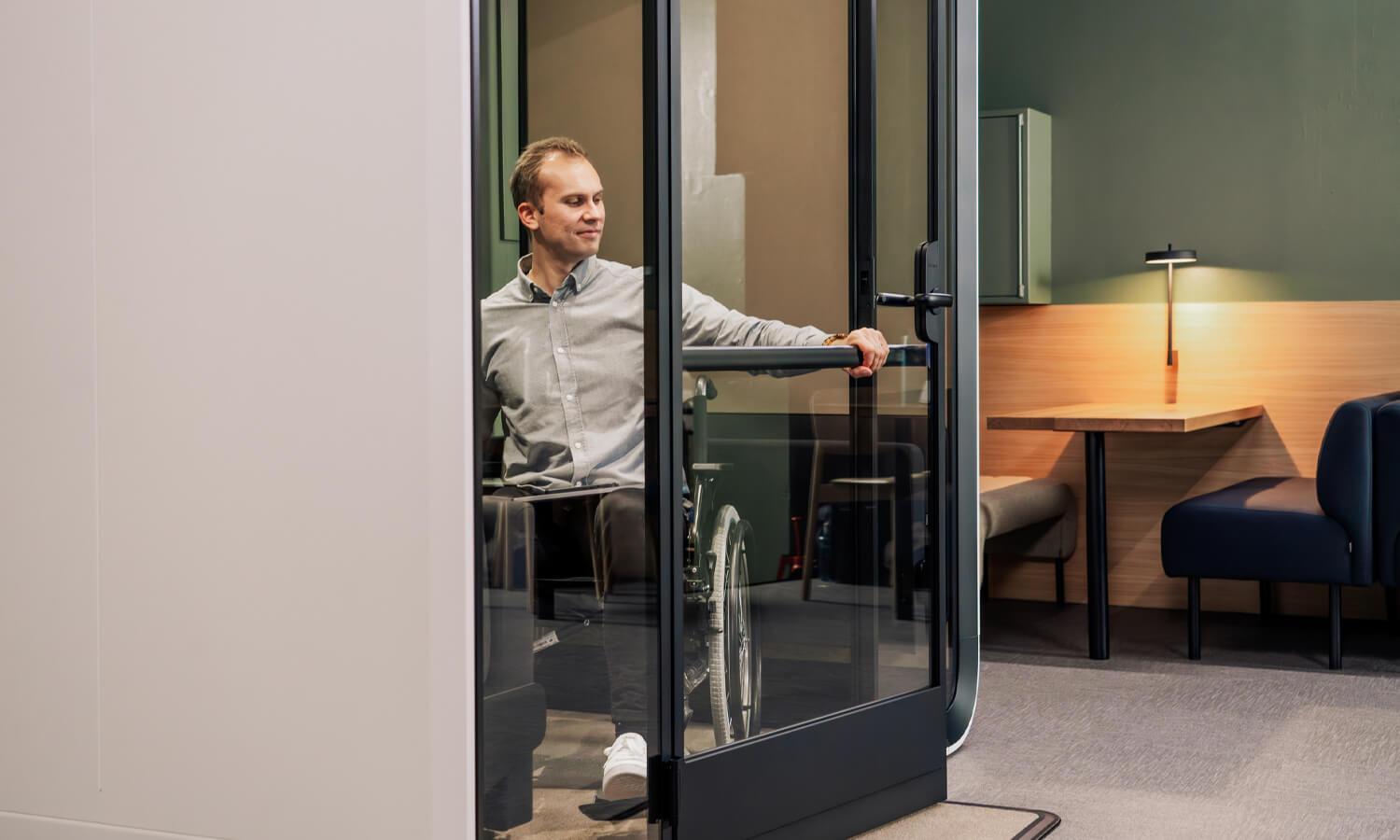
Neuroinclusion in the workplace
When discussing workplace accessibility, the conversation often centers on physical accommodations, like ramps, elevators, or accessible bathrooms. Although the needs of disabled employees should always be taken into consideration, a truly inclusive workplace must consider the needs of neurodivergent individuals as well.
Neuroinclusion benefits employees whose brains function differently from the majority, including those with autism, ADHD, dyslexia, and other neurodivergent traits.
Neurodiversity is not a rarity; one in five Americans identifies as neurodivergent. Yet, a typical office job may pose challenges to those with difficulties focusing or sensitivity to sounds and other external stimuli.
Accessible design and neuroinclusive work practices benefit everyone, not just those who need them the most.
When organizations embrace neuroinclusive design, the benefits ripple across the entire workforce. One of the most effective ways to support neurodiversity is to provide quiet, flexible spaces that employees can access as needed.
Soundproof office pods help reduce sensory overload, offering privacy, boosting focus, and improving productivity. Furthermore, because pods can be used by anyone, they normalize the need for flexible environments and do not single out any one individual. These accommodations feel like part of the culture, not special exceptions.
Designing an accessible workplace layout
Workplace accessibility is not just about individual features–it is about the flow and usability of the entire space. Here are key considerations:
- Clear pathways: Ensure corridors are wide enough and free from obstructions for wheelchairs.
- Wayfinding tools: Use tactile floor indicators, high-contrast signage, and visual cues. The Framery Room Display shows the availability of any space at a glance and makes booking easy.
- Flexible seating areas: Include a mix of seating types and adjustable options.
- Accessible tech: Provide captioning, screen readers, voice control, and accessible AV equipment.
- Quiet zones: Offer low-stimulation areas or smart pods for those who benefit from less sensory input. The Framery One Compact, Framery Four and Framery Six pods are equipped with soundmasking technology that reduces distractions throughout the office.
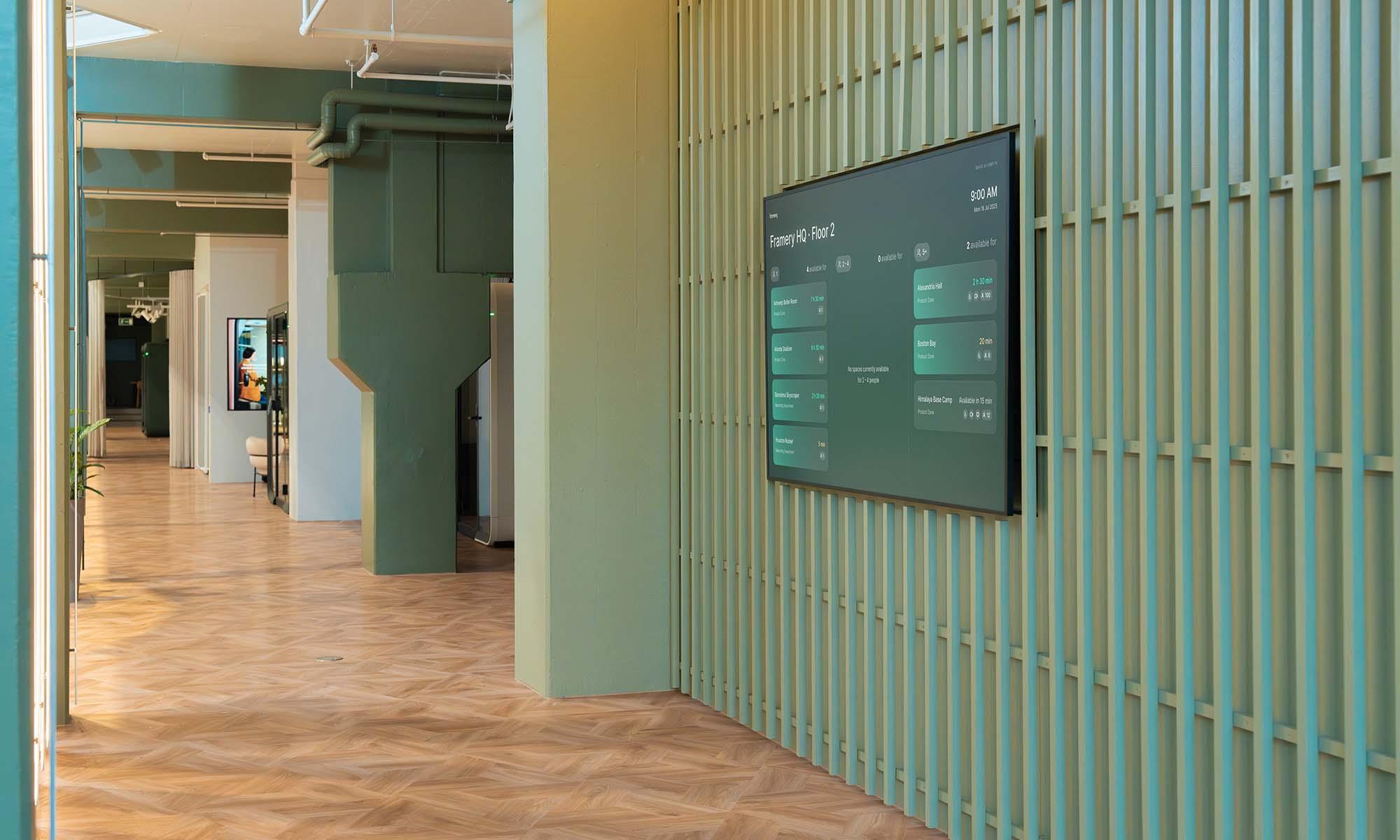
Why accessibility in the workplace matters
According to the World Health Organization (WHO), about 1.3 billion people experience significant disability globally, representing 16% of the world’s population. However, as reflected in Deloitte’s Disability Inclusion @ Work 2024 survey, many workers who have disclosed their disability, neurodivergence or health condition at work struggle to access necessary accommodations.
According to the CDC, more than 1 in 4 adults in the United States have some type of disability.
Many regions have accessibility laws in place, such as the Americans with Disabilities Act (ADA) or the EU Accessibility Act. Designing for accessibility proactively ensures compliance and avoids costly retrofits or legal issues down the line.
Furthermore, companies should consider digital accessibility and the needs it poses for their digital services. Resources like the Web Content Accessibility Guidelines (WCAG) can help companies ensure that their online resources are accessible and usable.
Lastly, an accessible workplace is more attractive to a wider range of talent, including individuals with disabilities. Welcoming employees with different backgrounds and abilities ensures you do not miss out on valuable skills and perspectives.
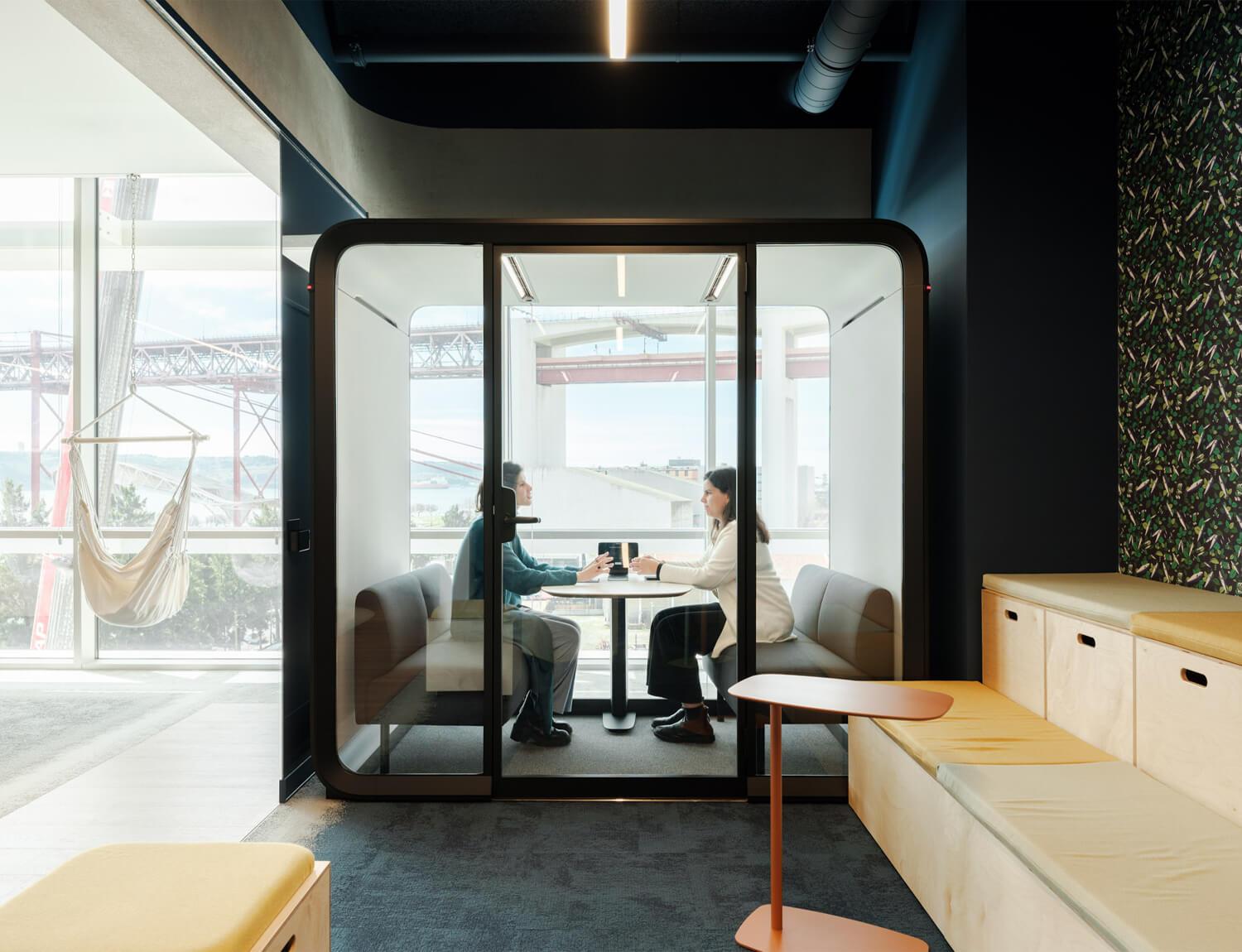
FAQ about workplace accessibility
What is the difference between accessibility and inclusion?
Accessibility ensures everyone can access and use a space, tool, or service, regardless of physical or cognitive ability. Inclusion goes a step further by fostering a culture where all individuals feel valued, respected, and supported to thrive. Both are essential to building an equitable workplace.
Who benefits from workplace accessibility?
While accessibility efforts often focus on people with disabilities, everyone benefits. Clear navigation, adjustable furniture, quiet spaces, and flexible layouts improve productivity, reduce stress, and make work more comfortable for all employees.
How to assess if a workplace is accessible?
Start with a comprehensive accessibility audit. This may include checking for physical barriers (e.g., door widths, signage, pod thresholds), surveying employees anonymously about accommodation needs, and reviewing your technology and digital tools for usability. Engage with disability inclusion consultants if needed, and remember to comply with your local regulations regarding workplace accessibility.
Get started today
Design your own
Customize your pod and make it your own with our pod configurator.

Get a quote
Find your nearest representative to hear about pricing and get a quote for your project.
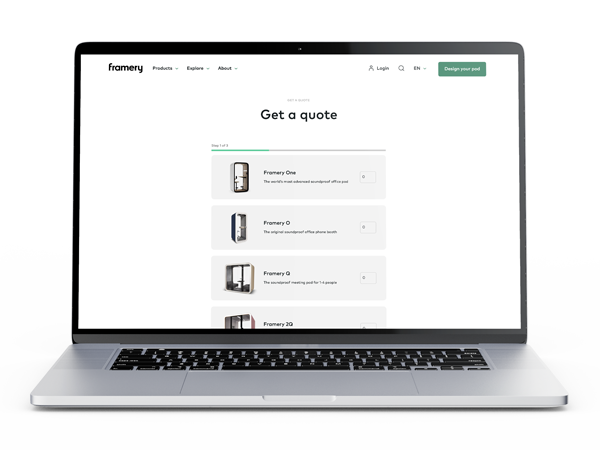
Try a pod
Visit one of our global showrooms to try any of our Framery pods for yourself.
